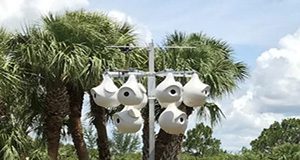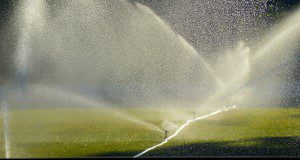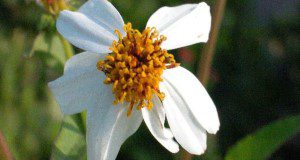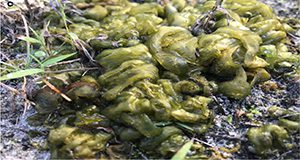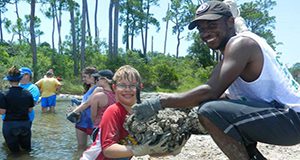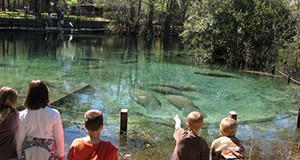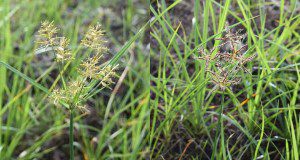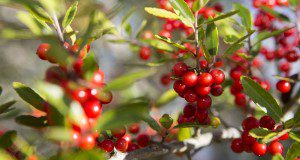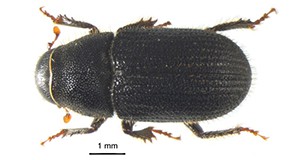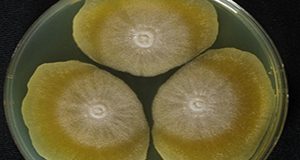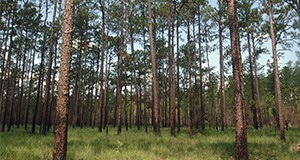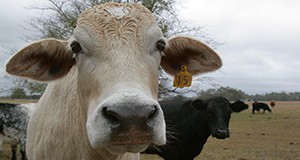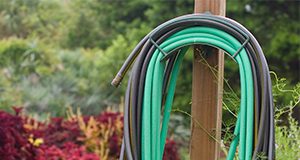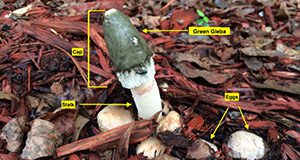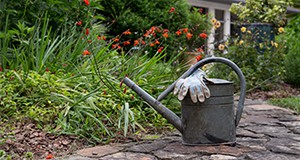Purple Martins are highly social, cavity-nesting birds. In the Eastern United States, a shortage of natural housing options has left these fascinating and attractive birds completely dependent on man-made housing. Author Holly K. Ober tested seven commercially available martin houses to determine what is best for martins in north Florida and provides recommendations in this 4-page fact sheet published by the UF/IFAS Department of Wildlife Ecology and Conservation.
http://edis.ifas.ufl.edu/uw450
Category: Environment
Exploring Relationships among Social Norms, Aesthetics, HOA Regulations and Water Conservation
In the United States, landscape irrigation often consumes 50% or more of residential water used, and aesthetics may take preference over water-conserving elements in the landscape. Other factors such as perceived social norms and homeowners' association (HOA) regulations also impact water conservation behaviors. Binary logistic regression estimated the impact of aesthetics, perceived social norms, and HOA regulations on water conservation intentions. Findings revealed that when individuals placed a higher-than-average value on aesthetics and perceived stronger social support for conservation, home irrigation users had greater intent to conserve water. This new 4-page publication of the UF/IFAS Department of Agricultural Education and Communication was written by Amanda D. Ali and Laura A. Sanagorski Warner.
http://edis.ifas.ufl.edu/wc331
Food Safety on the Farm: Good Agricultural Practices and Good Handling Practices: Transportation
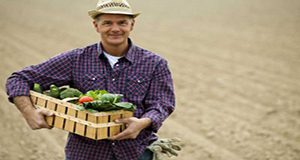
Good agricultural practices (GAPs) and good handling practices (GHPs) encompass the general procedures growers, packers, and processors of fresh fruits and vegetables should follow to ensure the safety of their product. GAPs usually address preharvest practices (i.e., in the field), while GHPs cover postharvest practices, including packing and shipping. This 3-page fact sheet covers the GAPs of transporting crops. This major revision is a part of the Food Safety on the Farm series and was written by Christopher R. Pabst, Jaysankar De, Alina Balaguero, Jessica Lepper, Renée Goodrich-Schneider, and Keith R. Schneider and published by the UF/IFAS Food Science and Human Nutrition Department.
http://edis.ifas.ufl.edu/fs151
Food Safety on the Farm: Good Agricultural Practices and Good Handling Practices: Water
Good agricultural practices (GAPs) and good handling practices (GHPs) encompass the general procedures growers, packers, and processors of fresh fruits and vegetables should follow to ensure the safety of their product. GAPs usually address preharvest practices (i.e., in the field), while GHPs cover postharvest practices, including packing and shipping. This 7-page fact sheet covers GAPs and GHPs relating to water use. This major revision is a part of the Food Safety on the Farm series and was written by Jaysankar De, Christopher R. Pabst, Jessica Lepper, Renée Goodrich-Schneider, and Keith R. Schneider and published by the UF/IFAS Food Science and Human Nutrition Department.
http://edis.ifas.ufl.edu/fs136
Biology and Management of Spanish Needles (Bidens spp.) in Ornamental Crop Production
All eight species of Bidens in Florida are commonly referred to as Spanish needles or beggar-ticks. This document focuses on Bidens alba and B. pilosa, which are common weeds in container nurseries and landscapes in Florida. This 6-page EDIS publication, written by Yuvraj Khamare, Chris Marble, Shawn Steed, and Nathan Boyd and published by the UF/IFAS Environmental Horticulture Department, is designed for landowners, gardeners, horticulturalists, and consumers hoping to learn more about Spanish needle classification and management.
http://edis.ifas.ufl.edu/ep572
Facts About Wildlife Diseases: Eastern Equine Encephalitis
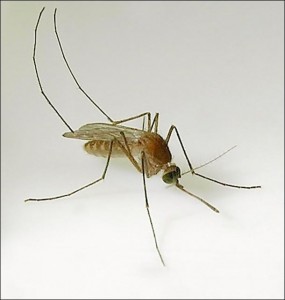
The Eastern equine encephalitis virus (EEEV) causes Eastern equine encephalitis (EEE) disease in birds, humans, horses, and other animals in the eastern United States, including Florida, which is especially receptive to the virus because of its freshwater hardwood swamps and wetlands, which provide good niches for the mosquito vectors of the disease. This 5-page fact sheet written by Samantha Wisely and Karen Hood and published by the UF/IFAS Department of Wildlife Ecology and Conservation describes the disease and includes strategies for limiting its spread.
http://edis.ifas.ufl.edu/uw453
Biology and Management of Nostoc (Cyanobacteria) in Nurseries and Greenhouses
This new 4-page document provides an overview of the biology and ecology of Nostoc-like cyanobacteria (blue-green algae) in humid soils and discusses cultural, physical, and chemical methods to manage this weed in nursery environments. Written by H. Dail Laughinghouse IV, David E. Berthold, Chris Marble, and Debalina Saha, and published by the UF/IFAS Agronomy Department, February 2019.
http://edis.ifas.ufl.edu/ag430
A Homeowner’s Guide to the Living Shoreline Permit Exemption Part 2: United States Army Corps of Engineers
Living shorelines are coastal shoreline stabilization interventions that rely on natural elements such as native vegetation and oyster reefs to protect property. The US Army Corps of Engineers, among other entities, regulates the placement of living shorelines through a permitting process to ensure project activities do not conflict with the public interest. In this 9-page guide, authors Savanna Barry, Sara Martin, and Eric Sparks provide you with example text for each application section that you can adapt to your needs to assist you in filling out the permit application. Published by the UF/IFAS Florida Sea Grant College Program.
http://edis.ifas.ufl.edu/sg189
How Red Tides Impact Manatees
One of Florida's keystone species, manatees help to maintain healthy coastal and riverine ecosystems and are economically important for many coastal communities. Effective protection measures implemented in Florida for many years allowed state and federal regulators to reclassify manatees from Endangered to Threatened in 2017. Red tides, especially persistent blooms during winter months, can be one of the largest killers of Florida manatees, and they may become endangered again if they are subjected to increased mortality and stress. Understanding how red tides affect manatees and how can you help is critical. This 5-page fact sheet written by Brittany Hall-Scharf and Armando Ubeda and published by the UF/IFAS Florida Sea Grant College Program will explain what red tides are, how they harm manatees, and what you can do to help.
http://edis.ifas.ufl.edu/sg188
Biology and Management of Yellow (Cyperus escuelentus) and Purple Nutsedge (C. rotundus) in Ornamental Crop Production and Landscapes
This new six-page document provides insight on characteristics and management techniques for both yellow and purple nutsedge, prevalent and persistent weeds in Florida. Written by Debalina Saha, Chris Marble, Nathan Boyd, and Shawn Steed and published by the UF/IFAS Environmental Horticulture Department, March 2019.
http://edis.ifas.ufl.edu/ep569
Key Plant, Key Pests: Holly (Ilex sp.)
This series of Key Plant, Key Pests publications are designed for Florida gardeners, horticulturalists, and landscape professionals to help identify common pests associated with common Florida flora. This publication, the eighth in the Key Plant, Key Pests series, helps identify the most common pests found on Holly (Ilex sp.). This publication provides information and general management recommendations for Florida wax scale, tea scale, Cylindrocladium leaf spot, dieback, Sphaeropsis gall, root knot nematodes, and magnesium deficiency. This five-page document was written by Juanita Popenoe, Caroline R. Warwick, Jacqueline Bourdon, and Liz Felter and published by the UF/IFAS Department of Environmental Horticulture.
http://edis.ifas.ufl.edu/ep566
A Homeowner’s Guide to the Living Shoreline Permit Exemption Part 1: Florida Department of Environmental Protection
“Living shoreline” is a term that describes coastal shoreline stabilization interventions that rely on natural elements such as native vegetation and oyster reefs to protect property. Living shorelines typically involve construction or placement of materials within state waters (public lands that occur waterward of the mean high tide line). The Florida Department of Environmental Protection and other entities regulate the placement of living shorelines through a permitting process to ensure project activities do not conflict with the public interest. To streamline the approval process for environmentally beneficial projects such as living shorelines, the DEP has defined an exemption for small-scale living shoreline projects that meet certain criteria. This 17-page fact sheet written by Savanna Barry, Sara Martin, and Eric Sparks and published by the UF/IFAS Florida Sea Grant College Program provides a guide to completing the exemption forms.
http://edis.ifas.ufl.edu/sg187
The Southern Pine Beetle Dendroctonus frontalis (Coleoptera: Curculionidae: Scolytinae)
The southern pine beetle, Dendroctonus frontalis Zimmermann, is the most destructive insect pest of pine in the southern United States. This 8-page fact sheet written by Demian F. Gomez and Jiri Hulcr and published by the UF/IFAS Department of Entomology and Nematology describes the beetle and includes advice on how to monitor for them and strategies for their prevention and control.
http://edis.ifas.ufl.edu/in333
Geosmithia Species in Florida: Common Fungal Symbionts of Wood-Boring Bark Beetles
Geosmithia are fungi associated with wood-boring bark beetles. Most Geosmithia species do no harm to host trees, but the canker-causing Geosmithia morbida and its beetle vector, the walnut twig beetle, cause the disease complex known as thousand cankers disease on walnut trees. Continuous surveys in Florida have found neither Geosmithia morbida nor its beetle vector in the state, but many native Geosmithia species have been recovered. These native species look similar to the pathogenic fungus but are harmless to their plant hosts. This 4-page fact sheet written by Yin-Tse Huang and Jiri Hulcr and published by the UF/IFAS School of Forest Resources and Conservation provides basic guidelines to sample Geosmithia species in the field and information for distinguishing the plant pathogenic Geosmithia morbida from other Geosmithia species.
http://edis.ifas.ufl.edu/fr412
Basic Steps to Creating a Conservation Land Trust in Florida
Conservation land trusts, more commonly called land trusts, are private 501(c)(3) nonprofit organizations that protect land important to your community for its natural, cultural, and recreational value. These publicly supported organizations also sustain healthier and more resilient economic development in your community and throughout the state. This 5-page fact sheet written by Benjamin W. North, Elizabeth Frances Pienaar, and Jessica D. Sullivan and published by the UF/IFAS Wildlife Ecology and Conservation Department outlines the basic steps to creating a land trust and provides links to the necessary documents and resources that will assist you in creating a land trust.
http://edis.ifas.ufl.edu/uw448
Antibiotic Use and Resistance for Beef Cattle Producers
Antibiotic-resistant microorganisms cause millions of illnesses and cost billions of dollars in the United States each year. This 5-page fact sheet written by Chad Carr, Matt Hersom, K. C. Jeong, Nicolas DiLorenzo, Jason Scheffler, Victoria Roberts, Gina Faniola, Stephanie Miller, Haley Denney, Nahilia Williams, and Bianca McCracken and published by the UF/IFAS Department of Animal Sciences discusses the use of antibiotics in cattle production operations and answers some common questions about antibiotics and antibiotic-resistant microorganisms.
http://edis.ifas.ufl.edu/an351
Meeting US Nursery and Greenhouse Growers’ Needs with Water Conservation Extension Programs
This 5-page document presents results of a study designed to understand the knowledge level, adoption rate, and levels of continuance associated with eight water conservation technologies among nursery and greenhouse growers. Written by Laura A. Sanagorski Warner, Alexa J. Lamm, Sarah A. White, Paul R. Fisher, and Peyton N. Beattie and published by the UF/IFAS Department of Agricultural Education and Communication, January 2019.
http://edis.ifas.ufl.edu/wc327
Featured Creatures Released November and December 2018
Stinkhorn Mushrooms (Agaricomycetes: Phallales: Phallaceae)
Stinkhorn mushrooms are commonly found in Florida home gardens and along the Gulf Coast, and are known for their offensive, rotting odor. This 5-page document profiles the morphology, ecology, phenolology, toxicology, and treatment of this mushroom. Written by Eleanor Phillips, Jennifer L. Gillett-Kaufman, and Matthew E. Smith and published by the UF/IFAS Plant Pathology Department, December 2018.
http://edis.ifas.ufl.edu/pp345
Manual de los Reglamentos del Agua en Florida: Ley del Agua de 2016
La Ley del Agua de la Florida de 2016 es una política de agua integral que aborda los problemas críticos de abastecimiento de agua y calidad de la Florida. Entró en vigor el 1 de julio de 2016. La Ley del Agua de la Florida de 2016 creí la Ley de Protección de Acuíferos y Manantiales de Florida, codificó la Iniciativa de la Florida Central y revisó la Ley de los Everglades y Estuarios del Norte. Written by Michael Olexa, Tatiana Borisova, and Jarrett Davis and published by the UF/IFAS Food and Resource Economics Department.
http://edis.ifas.ufl.edu/fe1046
